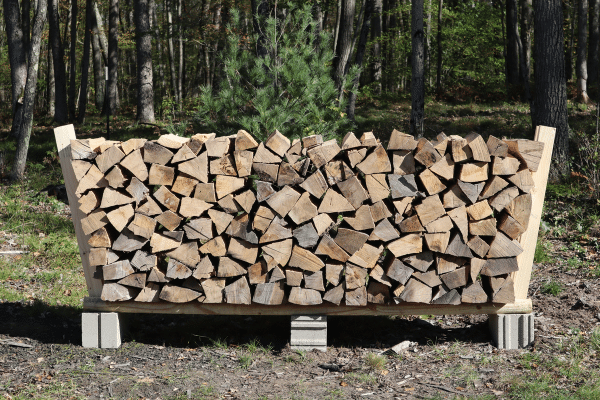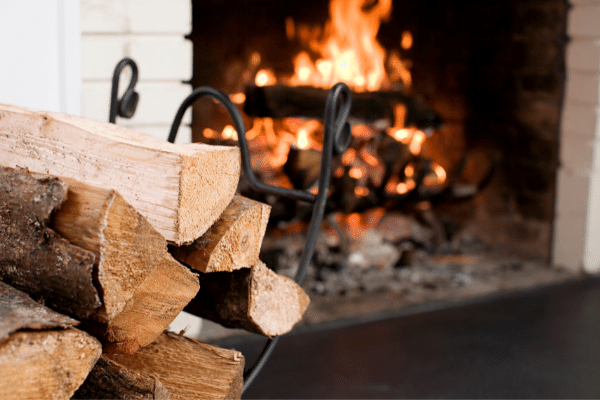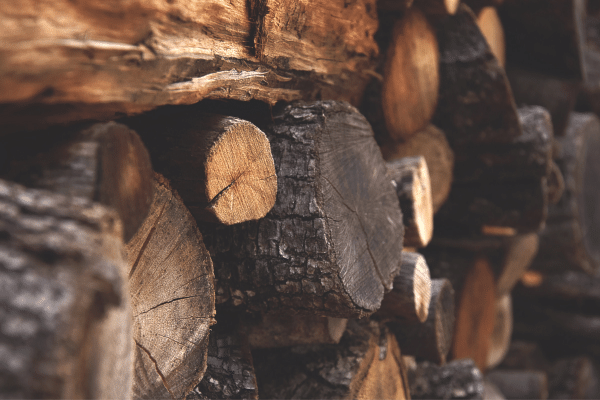- Home
- Best Firewood
- How to Season Firewood
How To Season Firewood
This post may contain affiliate links so I earn a commission.
Learning how to season firewood isn't difficult, but it is one of the most important steps when heating with wood.
The term "seasoned firewood" refers to wood that has a moisture content of 20 percent or less, which creates a fire that's easy to light and safe to burn.
Consider this, a tree contains many small tubes that run the length of the tree.
These tiny tubes, similar to a bundle of straws, transports water throughout the tree in order for it to survive.
When you cut down a living tree, this water is stored inside these tubes as free water, and also in the cell walls, called molecular water.
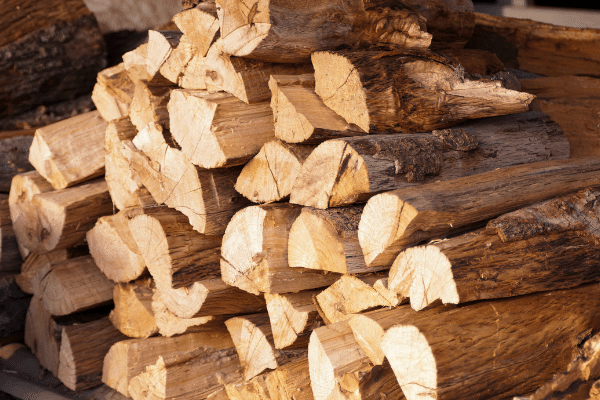
So, in order to remove all of this water contained inside the tree, you'll need to season it, or dry it out so it's ready to burn.
What happens if you try to burn wet firewood?
Wet firewood contains too much moisture inside the wood to effectively burn, causing the fire to smoke, smolder and leave behind unburned gasses that travel up your chimney and stick to the interior walls forming creosote.
It also causes the inside of your wood stove glass to develop a dark colored haze that is often hard to remove.
If you want a fire that's easy to light, burns hot and creates a nearly smokes flame, you'll need to season your wood.
Below we'll discuss how to season firewood the best way to make sure it's dry and ready to burn.
Cutting And Splitting The Wood
Depending on the size of your wood burning stove, you'll probably cut most of your firewood in 16 inch lengths.
16 inches is pretty much the standard length for firewood, but you can cut the wood to any length you want.
A general rule is to cut your firewood about 3 inches smaller than the inside dimensions of your wood burning stove.
This allows you to load up the firebox with the maximum amount of wood, without dealing with pieces that are too long to fit inside.
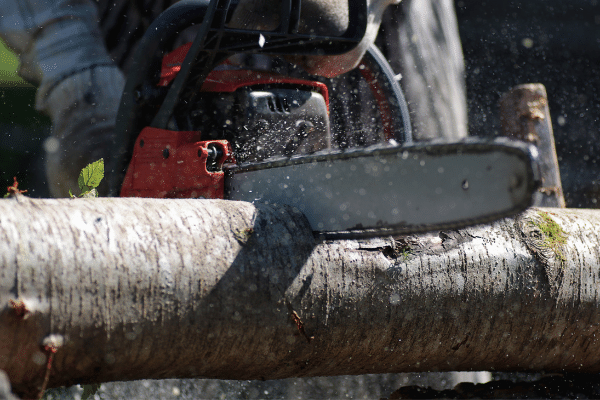
Wood cut to a smaller length, like 12 or 14 inches, will typically dry out faster because the water has less distance to travel to exit out the ends of the wood.
However, cutting smaller pieces means more cutting, splitting and stacking.
Splitting the wood increases the exposed surface area, allowing the firewood to dry out.
The bark on a piece of firewood has an amazing ability to hold in moisture and prevent the wood from drying out.
So, you'll want to split any piece of wood larger than 4 or 5 inches in diameter to help the wood dry out quickly.
How To Season Firewood - The Best Way To Stack Wood
In order to help the wood dry out as quickly as possible, you should elevate the wood off the ground when you stack it.
Elevating the wood prevents the wood from soaking up ground moisture, and it also allows the wind to reach all sides of the firewood stack.
Also, wood that's elevated reduces the possibly of insects or pests living in your firewood while it dries.
To elevate the wood, 2x4's placed parallel to each other on the ground works great, or if you're trying to save money, you can use a couple of long limbs that are similar in shape.
If you're looking for something a little more permanent to stack your firewood on, you can use a designated firewood rack, or you can lay down a couple of pallets and then pound in some T posts on each end to use as a vertical support.
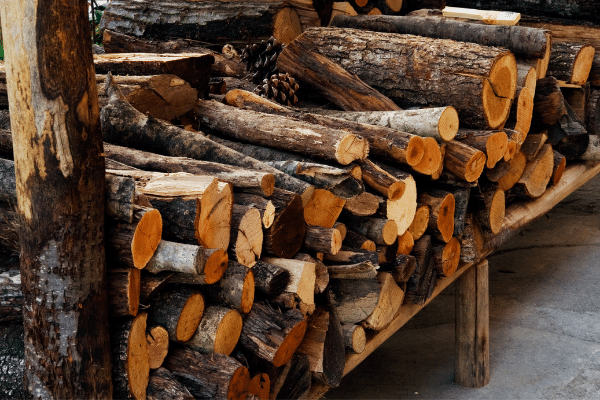
Stacking firewood with the bark facing up vs the bark facing down is a timeless debate.
Which one is better?
If you're going to place a cover over the top of the firewood stack it really doesn't matter.
However, if I had to choose between the two options, I like to stack the firewood with the bark facing up.
This allows the bark to help shed rain and snow and it prevents water from pooling up between the bark and the interior wood.
Also, when considering how to season firewood the best way, you'll want to leave a few inches of open space between each row of firewood that you stack.
This allows airflow to reach the interior pieces of wood, allowing them to season.
Utilize The Summer Sun
Firewood takes time to season, but you can speed up the process by stacking the wood in an area that receives plenty of sunlight.
Avoid shaded or low lying areas under trees.
If possible, choose a sunny location that's about 30 yards or more from your home or other structure.
You never want to stack wet firewood in your basement or garage because it simply won't receive the necessary sunlight or wind to dry out the wood.
Plus, there's a good chance you'll invite insects like carpenter ants inside your home, or the wet firewood will begin to mold before it dries.
How To Season Firewood Using A Cover Or Roof
A covered firewood shed with slatted sides and a pallet floor is probably the best way to cover up your firewood while it seasons.
However, building a dedicated firewood shed can be a time consuming and costly investment.
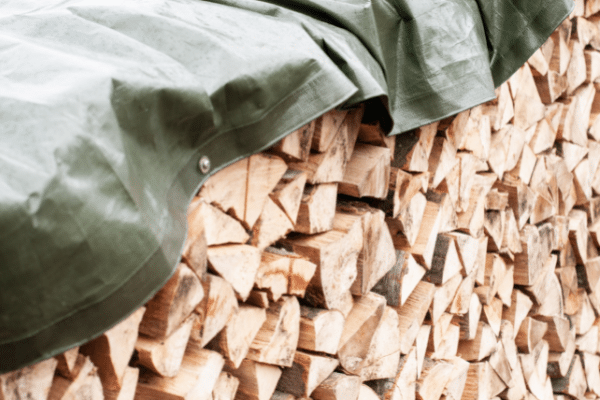
Using a cover on the top portion of the firewood stack sheds off rain and snow and helps keep your firewood dry.
A simple tarp works great, just make sure to tie it down so it does not blow away.
Also, you only need to cover the top 1/3 portion of the firewood.
Covering the entire stack of firewood will trap in the moisture and cause your firewood to grow mold.
How To Tell When Firewood Is Seasoned
Using a firewood moisture meter to check the moisture content of your wood is the fastest and most accurate way to tell the current moisture content.
A good firewood moisture meter can be purchased online and they're simple to use.
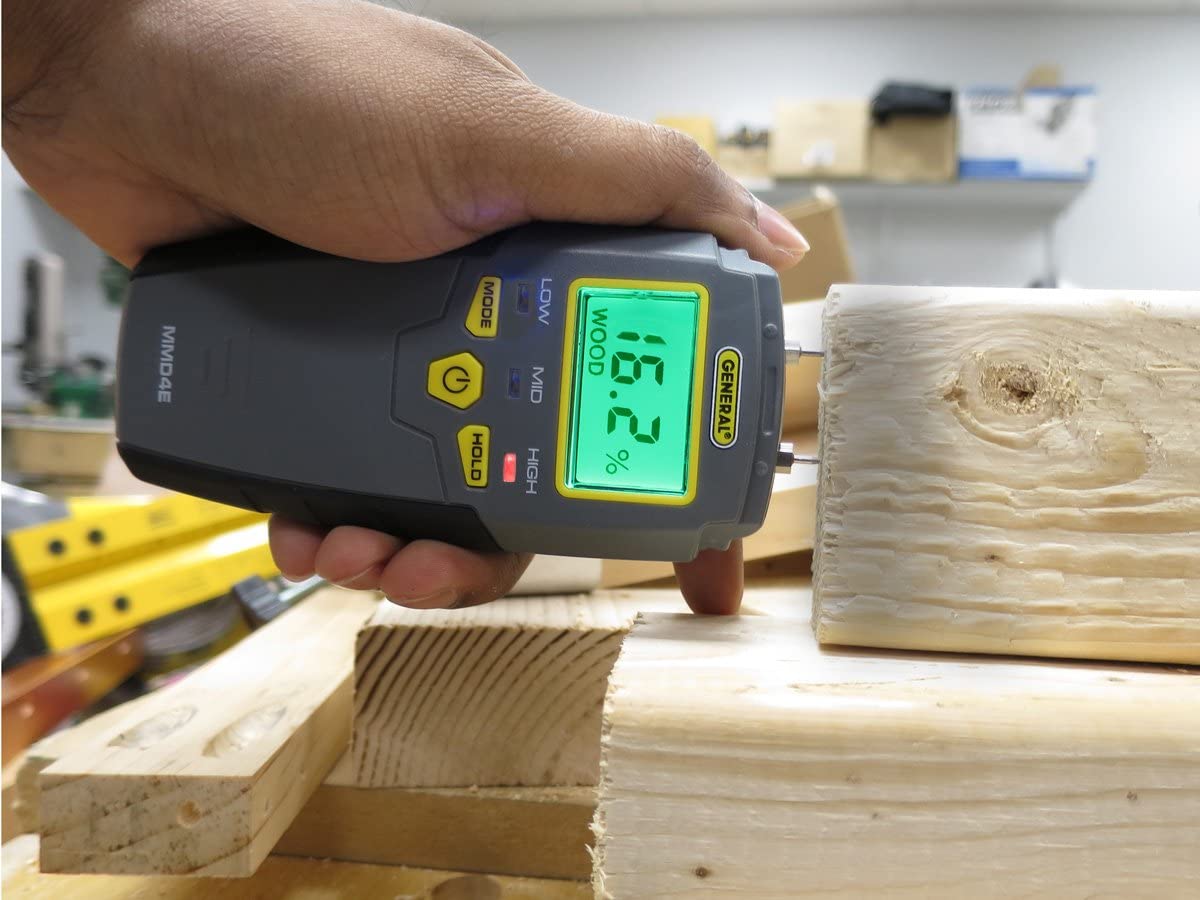
Plus you can use the meter on building supplies, as a water leak detector, or even to monitor the possibility of mold.
You can also tell wet firewood vs dry firewood by comparing the weight of the wood.
Wet firewood will feel damp and be very heavy compared to dry firewood that will be significantly lighter.
You can also take two pieces of wood and bang them together to see if the wood is seasoned.
Dry firewood will make a "ping" sound while wet firewood will make a "thud" sound.
What does your firewood look like?
Good, dry, seasoned firewood will have cracks developing on the ends of the wood, look grey in color and the bark will be falling off.
You want to burn firewood that looks old and weathered, not bright and shiny which indicates it is still green and full of moisture.
How To Season Firewood - Overall
Learning how to season firewood is pretty easy if you follow the steps outlined above.
Remember, even though these tips will teach you how to season firewood as fast as possible, it still takes time for the wood to dry out.
You'll need about 6 months to a year for the wood to become seasoned, and some hardwoods, like oak can take up to two years before they're ready to be burned.
Take the time to plan ahead and you'll find building a fire with quality seasoned wood is not only much more enjoyable, but it's a lot safer too!
